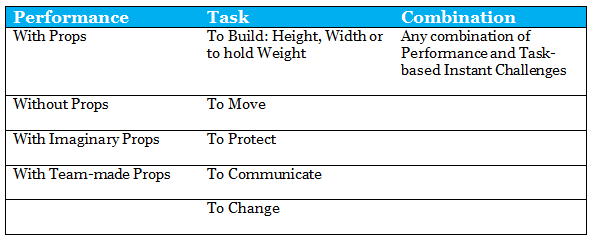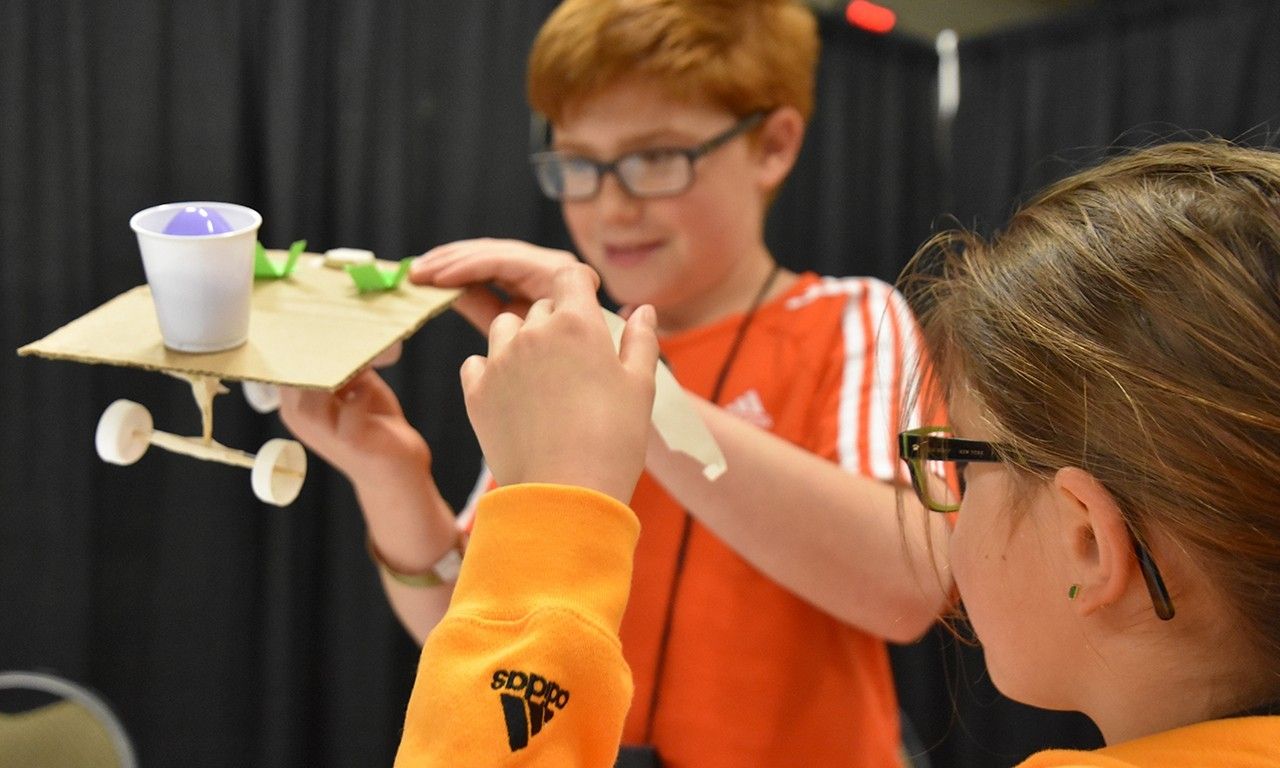By: Andrew Whitmire
Growing up as a Destination Imagination participant, I always got psyched out at the thought of the Instant Challenge my team and I might face at the tournament. For many years, Instant Challenge was a big and scary unknown and I thought there was no way to prepare. However, that just isn’t true! If you follow these three simple Instant Challenge tournament tips, your team will become more confident about approaching not only any Instant Challenge, but anything life throws your way.
1. IDENTIFY AND UNDERSTAND THE INSTANT CHALLENGE TYPE.
The table below is your friend. There are only three broad Instant Challenge types: Performance, Task and Combination (Performance + Task). Your team should spend time reading different Instant Challenges with the goal of being able to instantly identify which type they are.

Why? If every team member is able to identify the type of Instant Challenge they have been presented, everyone can more easily boil down the tasks that need to be completed in order to maximize the score. For instance, if an Instant Challenge requires the team to transport a plastic egg as far as possible, it should be identified as a Task-Based Instant Challenge that requires movement. If the same Challenge also requires the team to come up with a name for its transportation device, the Challenge would be considered Combination.
2. IDENTIFY AND UNDERSTAND THE INSTANT CHALLENGE MATERIALS.
Many Instant Challenges come with materials that your team will use to complete a task or tasks. The team should be able to survey a series of commonplace objects like straws, paperclips, sticky labels and paper and be able to sort them into the following 3 categories:

Why? Since Instant Challenges are usually over in about 10 minutes or less, it is important that you do not waste precious time fumbling with the materials you have been given. Having a common vocabulary and a way to categorize the properties of the materials you have been given will allow your team to jump into the planning and executing stages of the Instant Challenge more easily. Most materials can be categorized in multiple ways. For instance, an envelope, depending on how it is used, could be an extender, a connector or a controller. Your team should think about ways that each item you’re given can be used as an extender, connector or controller. Your team should spend time just playing with typical Instant Challenge materials to help you better understand how to manipulate them quickly and efficiently.
3. ASSIGN INDIVIDUAL TEAM MEMBER ROLES.
Being a team doesn’t mean that everyone is good at the same things. By assigning yourselves to roles that you are well-suited for you will make the time spent in the Instant Challenge room easier. Some of the potential team roles include:

Why? The Instant Challenge room can be intense and high-pressured because of how quickly everything happens. Walking in and having a general idea of what each team member will be focused on can have a profoundly positive effect. If your team is clear on team roles, the majority of the time can be spent solving the Challenge instead of negotiating who is doing what. Team roles are also fluid and, during practice, your team should switch them up to make sure everyone is practicing outside their comfort zone.
So, there it is. If you begin to implement these three simple techniques, your team will increase your ability to solve any Instant Challenge successfully. Just remember to Stay Calm and Instant Challenge On! Good luck!
For more team tips, check out our Team Manager Tips blog series and follow us on social.






